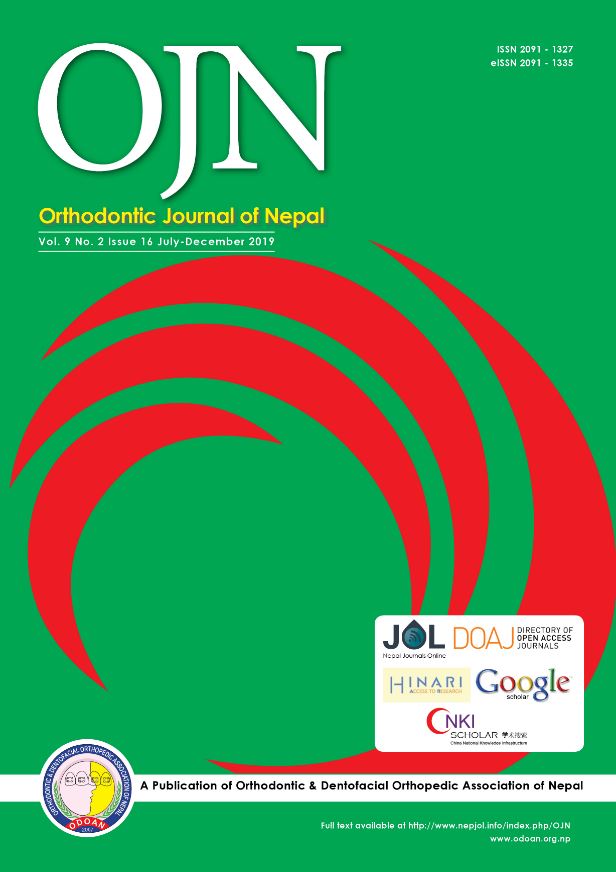Correlation between Chronological Age, Cervical Vertebral Maturation and Fishman’s Skeletal Maturity Indicators in Central India Population
DOI:
https://doi.org/10.3126/ojn.v9i2.28415Keywords:
Cervical vertebra maturation, Chronological age, Hand-wrist maturation, Skeletal maturityAbstract
Introduction: Skeletal maturity indicators are very important indicators when diagnosing and panning the treatment in growing population. Cervical Vertebrae Method (CVM) and Fishman’s Skeletal Maturity Indicators are two commonly used methods for the diagnosis and treatment planning. The aim of the study was to investigate the correlation between cervical vertebral maturation (CVM)and Fishman’s hand-wrist skeletal maturity indicator and chronological age by including subjects within the range of circumpubertal growth spurt in Central India.
Materials & Method: One Twenty Five contemporary hand-wrist and lateral cephalometric radiographs from population of Central India were randomly selected and analyzed. All subjects were within the circumpubertal period i.e. female subjects were between 10 and 15 years of age, and the male subjects were between 12 and 17 years of age. The hand-wrist bone analysis was evaluated using the method developed by Fishman whereas cervical vertebra bone analysis was evaluated using the method developed by Baccetti and co-workers. These two methods and chronological age were correlated using the Spearman rank correlation analysis.
Result: CVM was significantly correlated with hand-wrist maturation (r=0.8868). However low correlation was found between the CVM and chronological age( r =0.7139) and little correlation was found between the HWM and chronological age ( r =0.6892).
Conclusion: CVM is a valid indicator of skeletal growth during the circumpubertal growth period and has a high correlation with the HWM for the Central India population. However chronological age is not suitable to measure skeletal maturity as shown by the low correlations found between the chronological age and both CVM and HWM.
Downloads
Downloads
Published
How to Cite
Issue
Section
License
Copyright © held by Orthodontic & Dentofacial Orthopedic Association of Nepal
- Copyright on any research article is transferred in full to the Orthodontic & Dentofacial Orthopedic Association of Nepal upon publication in the journal. The copyright transfer includes the right to reproduce and distribute the article in any form of reproduction (printing, electronic media or any other form).
- Articles in the Orthodontic Journal of Nepal are Open Access articles published under the Creative Commons CC BY License (https://creativecommons.org/licenses/by/4.0/)
- This license permits use, distribution and reproduction in any medium, provided the original work is properly cited.




